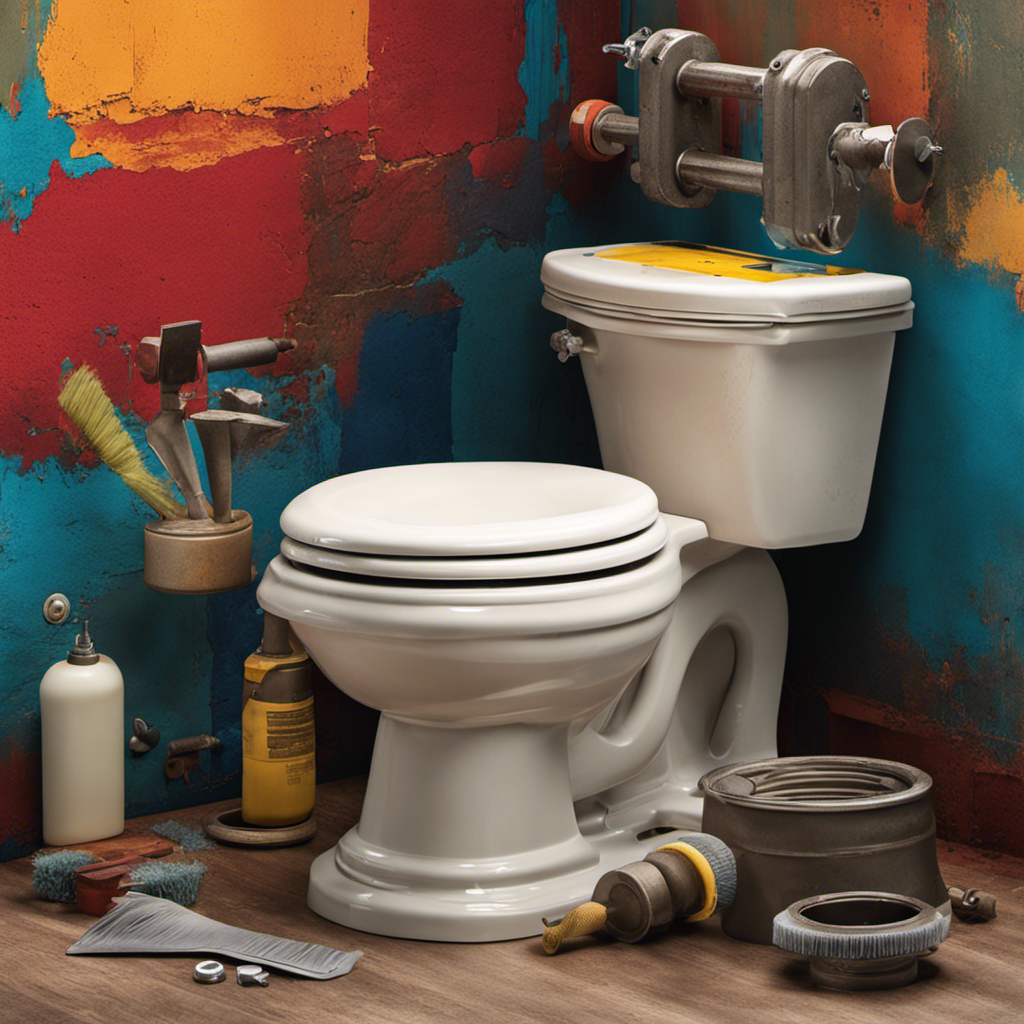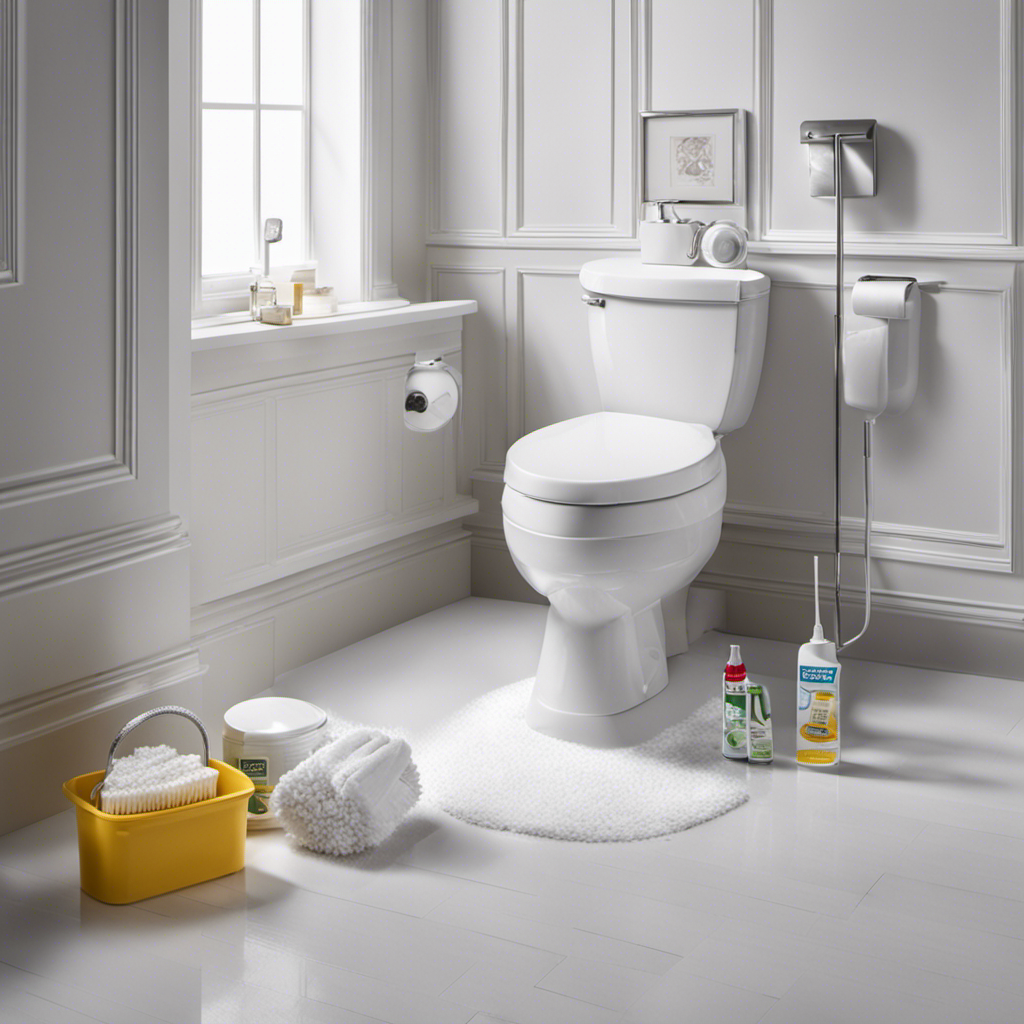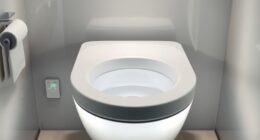Hey there, folks!
Ever found yourself in a sticky situation with a faulty toilet flange? Well, fear not, because I’ve got just the solution for you.
In this article, I’ll guide you through the step-by-step process of changing a toilet flange, ensuring that your bathroom stays leak-free and fully functional.
So, grab your tools and let’s dive right in. Trust me, with a little know-how and some elbow grease, you’ll have that flange replaced in no time.
Let’s get started!
Key Takeaways
- Promptly addressing cracks, corrosion, or a loose fit prevents further damage to the bathroom floor or subfloor.
- Gathering the necessary tools and materials, such as gloves, wrench, scraper, new flange, wax rings, and bolts, is essential for the repair or replacement process.
- Properly removing the old toilet flange by turning off the water supply, disconnecting the toilet, inspecting the flange, and carefully lifting the toilet off the flange.
- Installing a new toilet flange ensures a secure connection, prevents leaks, and requires considering factors like material, size, and compatibility.
Assess the Condition of Your Toilet Flange
Before you can change a toilet flange, you need to assess the condition of your current one. This step is important because it will determine the extent of the repair needed and whether a replacement is necessary.
When inspecting your toilet flange, look for signs of damage such as cracks, corrosion, or a loose fit. A damaged toilet flange can cause leaks, rocking toilets, or even a complete breakage. It’s crucial to address these issues promptly to prevent further damage to your bathroom floor or subfloor.
Once you have identified the problem, you can proceed to gather the necessary tools and materials for the repair or replacement.
Now that you know the condition of your toilet flange, it’s time to gather what you need to fix it.
Gather the Necessary Tools and Materials
To get started, you’ll need to gather all the tools and materials necessary for the task of toilet flange maintenance and troubleshooting toilet flange issues.
First, you’ll need a pair of gloves to protect your hands and a mask to prevent inhaling any unpleasant odors.
Next, grab a wrench or pliers to loosen and remove the bolts securing the toilet to the flange.
You’ll also need a scraper or putty knife to remove any wax residue from the old flange.
Additionally, have a new toilet flange on hand, along with wax rings and bolts for reinstallation.
Lastly, don’t forget a level to ensure the toilet is properly aligned once everything is back in place.
With these tools and materials ready, you’ll be well-prepared to tackle any toilet flange issues that come your way.
Remove the Old Toilet Flange
Once you’ve gathered all the necessary tools and materials, it’s time to remove the old toilet flange. Here’s a step-by-step guide on how to do it:
-
Turn off the water supply: Locate the shut-off valve near the base of the toilet and turn it clockwise to stop the water flow.
-
Disconnect the toilet: Remove the nuts securing the toilet to the floor and carefully lift it off the flange. Set it aside on a protective surface.
-
Remove the flange: Inspect the flange for any cracks or damage. If you notice any, this is the perfect time to replace the broken flange. Use a wrench or pliers to loosen and remove the bolts holding the flange to the floor.
Install the New Toilet Flange
Now that you’ve removed the old toilet flange, it’s time to install the new one. Installing a new toilet flange is an important step in any bathroom renovation. It ensures a secure connection between the toilet and the drain pipe, preventing leaks and maintaining proper flushing. Before you begin, it’s important to troubleshoot common issues with toilet flange installation. One common issue is an uneven or wobbly flange, which can be resolved by using shims or a leveling compound. Another issue is a cracked or damaged flange, which requires replacing the entire flange. When choosing the right toilet flange for your bathroom renovation, consider factors such as the flange material, size, and compatibility with your toilet and drain pipe. A table below summarizes the key factors to consider when selecting a toilet flange:
| Factors to Consider | Description | Tips |
|---|---|---|
| Material | Choose a flange made of durable material like PVC or cast iron. | PVC is lightweight and resistant to corrosion, while cast iron is sturdy and long-lasting. |
| Size | Ensure the flange matches the size of your toilet drain pipe. | Measure the diameter of the pipe accurately before purchasing a flange. |
| Compatibility | Check if the flange is compatible with your toilet model. | Refer to the manufacturer’s specifications or consult a professional if unsure. |
Test for Leaks and Ensure Proper Installation
After installing the new toilet flange, it’s important to test for leaks and ensure proper installation. Here are three steps to help you check for water damage and troubleshoot toilet leaks:
-
Turn on the water supply: Slowly open the shut-off valve and let the water flow into the tank. Keep an eye out for any leaks around the flange area. If you see water dripping or pooling, there may be an issue with the installation.
-
Inspect the wax ring: Carefully examine the wax ring that seals the toilet to the flange. Look for any signs of damage or misalignment. If the ring is cracked or not properly seated, it could cause leaks.
-
Tighten the bolts: Check the bolts that secure the toilet to the flange. Use a wrench to ensure they are tightened properly. Loose bolts can lead to leaks and instability.
Conclusion
In conclusion, changing a toilet flange may seem daunting, but it can be done successfully with the right tools and materials. By assessing the condition of your flange, removing the old one, and installing a new flange, you can ensure a proper and leak-free toilet.
Remember, Rome wasn’t built in a day, and neither is a well-functioning bathroom. So take your time, follow the steps carefully, and soon you’ll be flushing away your plumbing problems like a pro.










